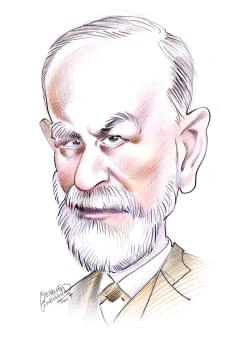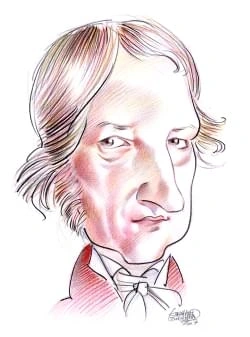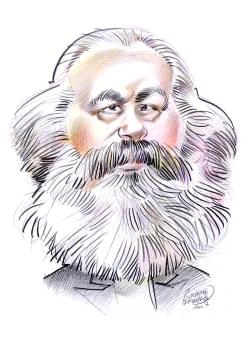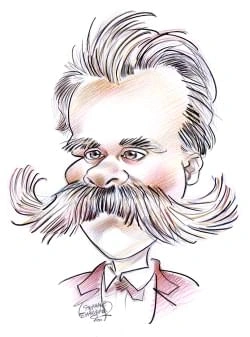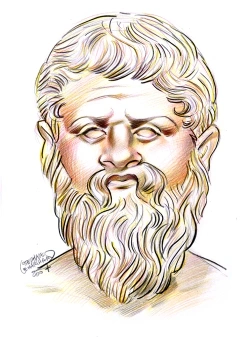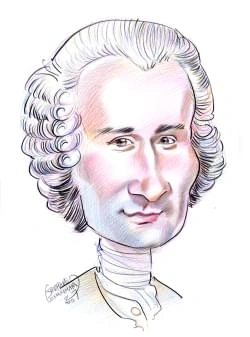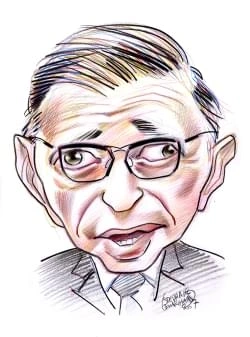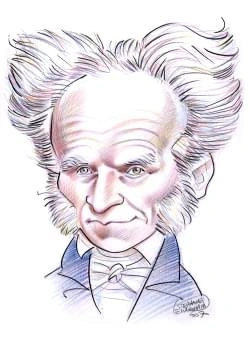86 résultats pour "petroleum"
-
L'Irak Petroleum Company (IPC)
exploiter la majeure partie des zones concédées.' de freiner la prodÛcllon. de pratiquer une politique de déslnvestlsseinent et de ne pas régler ses dettes fia cales. Celles-ci atteindront 343 nd~~~ct-.· de dollara è -la veille de la nationalisation. 4 En 1981, 1e g6n6ral Kauam retire l riPC ae,eOJo des surfaces qui lui avalent été concéd6es. La compa gnie proteste vigoureusement. contre cette confisciatlon. Mals les plus Importants gise...
- BP [British Petroleum Company] (entreprise).
-
Occidental Petroleum
que ce colt. En deux ans, le gisement produit 40 mil- lions de tonnes. Cette soudaine richesse force Oxy chercher non seulement des debouches aux Etats-Unis (en Nouvelle-Angleterre notamment),ma's aussi en Europe, oa elle rachete des refineries :Anvers, qui produit 5 millions de tonnes par an, Essen et Ostermoor (Pays-Bas). 5 Oxy conclut des acoords (entre autres avec Elf-Erap) et accrott sa distribution en Angleterre, en Belgique, en Allemagne et en Suisse. Mais Oxy, qui produit 20 Vo du petrol...
- British Petroleum
-
Fossil Fuels.
water molecules. This crystalline solid is known as gas hydrate. Because technology for the commercial extraction of gas hydrates has not yet been developed, this typeof fossil fuel is not included in most world energy resource estimates. However, in February 2007 the U.S. Department of Energy completed the drilling of a well toretrieve core samples of gas hydrates found in the Prudhoe Bay region of Alaska’s North Slope. By identifying the nature of these gas hydrates, the Energy Departmenthoped...
- Zapata Petroleum Corporation
-
World Energy Supply.
In the 1990s, oil production by non-OPEC countries remained strong and production by OPEC countries rebounded. The result at the end of the 20th century was aworld oil surplus and prices (when adjusted for inflation) that were lower than in 1972. Experts are uncertain about future oil supplies and prices. Low prices have spurred greater oil consumption, and experts question how long world petroleum reservescan keep pace with increased demand. Many of the world’s leading petroleum geologists beli...
-
Trinidad and Tobago - country.
III PEOPLE The history of Trinidad and Tobago is reflected in the makeup of its population, among the most ethnically diverse in the Caribbean. Blacks of African ancestry andAsians of Indian ancestry each make up about 40 percent of the population. The remainder is mainly of mixed ancestry, although there are also small groups of peopleof Chinese, European, South American, and Middle Eastern descent. The ethnic diversity of Trinidad and Tobago owes its origins to slavery and its abolition. Afr...
-
-
Alaska - geography.
depression surrounded by highlands and have the coldest winter and hottest summer temperatures in Alaska. Once the Kuskokwim River passes through theKuskokwim Mountains, it forms the southern edge of a vast lake-studded alluvial plain bounded on the north by the Yukon River. This water-logged lowland is a majorsummer nesting area for birds. Fairbanks is the major city in this region, while Fort Yukon is the major community in the Yukon Flats and Bethel the largest settlementon the Lower Kuskokwi...
-
Alaska - USA History.
depression surrounded by highlands and have the coldest winter and hottest summer temperatures in Alaska. Once the Kuskokwim River passes through theKuskokwim Mountains, it forms the southern edge of a vast lake-studded alluvial plain bounded on the north by the Yukon River. This water-logged lowland is a majorsummer nesting area for birds. Fairbanks is the major city in this region, while Fort Yukon is the major community in the Yukon Flats and Bethel the largest settlementon the Lower Kuskokwi...
-
Carbon - chemistry.
Graphite is black and slippery and conducts electricity. In graphite, the atoms form planar, or flat, layers. Each layer is made up of rings containing six carbon atoms.The rings are linked to each other in a structure that resembles the hexagonal mesh of chicken wire. Each atom has three sigma bonds (with 120° between any two ofthe bonds) and belongs to three neighboring rings. The fourth electron of each atom becomes part of an extensive pi bond system. Graphite conducts electricity,because th...
-
Gabon - country.
government is engaged in preservation and reforestation programs. The fish catch in 2005 was 43,941 metric tons. C Mining Mining has developed rapidly since Gabon’s independence in 1960. Annual production of extremely high-grade manganese ore, from Moanda in the southeast, was1,090,000 metric tons in 2004. The rich deposits of iron ore located at Mekambo and Bélinga in the northeast have reserves estimated at more than 500 million metrictons. Exploitation of the iron ore has been hampered by th...
-
La British Petroleum Co. (BP)
liferes de ('Alaska etparticipe a la construction du pipe-line Transalaska. Depuis 1951, BP a fortement pro- gresse dans le secteur chimique, devenant l'une des premieres societes europeennes dans cette branche. 5 BP, qui a son siege a Londres, est tin holding coif- fent 201 Males, dont 108 lui appartiennent totalement. Elle est associee a quelque 450 societes dans 80 pays. Sa flotte compte une centaine de petroliers, d'un port en lourd de 5,9 millions de tonnes. Environ 30000 sta. tions-service...
- BP (British Petroleum Company).
-
Libya - country.
junipers and mastic trees are found in the higher elevations. Only a few large mammals are found in Libya. Wildlife includes desert rodents, hyenas, gazelles, and wildcats. Eagles, hawks, and vultures are common. E Environmental Issues Libya has undertaken a number of major irrigation projects intended to ease the country’s water shortage. The most ambitious is the so-called Great Man-Made River(GMMR), a massive 25-year irrigation scheme begun in 1984. The GMMR is a vast water pipeline system d...
-
Azerbaijan - country.
second most important industrial center after Baku. A Ethnic Groups Azerbaijan, including the autonomous exclave of Naxçivan, is populated mostly by ethnic Azerbaijanis, who are also known as Azeris. The ethnic composition of thecountry changed due to a civil war between the government of Azerbaijan and Armenian secessionists in the Nagorno-Karabakh enclave. Beginning in 1988, when thepeople of Nagorno-Karabakh unilaterally decided to secede from Azerbaijan, nearly the entire Azerbaijani popula...
-
-
Cameroon - country.
seminomadic herders of the north. Cattle, goats, and fowl are the most commonly raised animals. B Forestry and Fishing Timber is traditionally one of Cameroon’s most valuable exports, consisting mainly of mahogany, ebony, and teak. The timber cut in 2006 amounted to 11.4 million cu m(401 million cu ft). Most of the fish caught in Cameroon come from the country’s rivers and lakes and are consumed locally. However, deep-sea fishing activity isincreasing, especially from the port of Douala. Some 1...
-
Syria - country.
D Education Primary education is free and compulsory for all children aged 6 through 12. Some 78 percent of the adult Syrian population was estimated to be literate in 2005.Primary schools enrolled 2.8 million pupils in the 2000 school year, and 1.1 million students attended secondary schools and vocational institutes. In 1998, 94,110 Syrian students were enrolled in institutes of higher education. Syria has universities in Damascus, Ḩalab, Ḩim ş, and Al L ādhiq īyah. Also in Damascus isthe Ar...
-
Senegal - country.
Although most of the population works in agriculture, Senegal has a growing industrial sector, one of the largest in West Africa. Nevertheless, two cash crops remain atthe foundation of the economy—peanuts and cotton. Important technical and economic assistance has been provided by France and other countries of the EuropeanUnion and the International Bank for Reconstruction and Development (World Bank). In 2006 the gross domestic product (GDP) was $9.2 billion, or $760.90 a person. A Agriculture...
-
Venezuela - country.
Venezuela has six navigable rivers. Of the thousand or more streams in the country, the majority flow into the Orinoco. The Orinoco flows east across central Venezuelaand drains approximately four-fifths of the total area of the country. With the tributaries—the Apure, Meta, and Negro rivers—it forms the outlet into the Atlantic Oceanfor the waters of much of the interior of Colombia, as well as of inland Venezuela. F Climate The climate of Venezuela is tropical on the Llanos and along the coas...
-
Sudan - country.
B Principal Cities and Political Divisions The principal city is Khartoum, the capital; other major cities include Omdurman and Khartoum North, major industrial centers, and Port Sudan, a seaport on the RedSea. Sudan is divided into 26 states. C Religion and Language About 70 percent of the people of Sudan are Muslims, some 15 percent are Christians, and most of the remainder follow traditional religions. The people of northernSudan are predominantly Sunni Muslims (Sunni Islam). Most of the pe...
-
Jordan (country) - country.
whom belong to the Greek Orthodox Church, make up about 4 percent of the population. Islam is the state religion and Arabic the official language. C Education Jordan has made significant strides in education in recent decades, despite the influx of hundreds of thousands of refugees and the very large share of the nationalbudget assigned to the armed forces. Public education is free and compulsory between the ages of 6 and 15. At the secondary level, about 85 percent of the malechildren and 87 p...
-
South America - Geography.
South America is dominated by relatively warm climatic regimes. Spanning nearly the entire continent along the equator is a belt of humid tropical climate that grades tothe north and south into broad zones where the length of the rainy season and the amount of rainfall diminish. These zones have wet summers and dry winters and aresubject to prolonged droughts. Droughts are a particularly serious problem in northeastern Brazil and along the northern coast of Venezuela and Colombia. The areas ofra...
-
Angola (country) - country.
Portugal in 1975, it had approximately 400,000 Portuguese settlers. The vast majority of the Portuguese community has since departed for Portugal. A Population Characteristics The 2008 estimated population of Angola, including Cabinda, was 12,531,357. The population distribution, however, was uneven, with about 70 percent of thepopulation concentrated in the north and along the coast. The rate of population increase was 2.1 percent annually in 2008. The population is overwhelmingly rural; only3...
-
-
Tunisia - country.
mixture of Berber and Arab stock, and they regard themselves as Arabs. Nearly everyone speaks Arabic. The population of Tunisia is concentrated in the coastal plain. It is fairly dense in the hilly north, but the arid plateau, basin, and south are thinly settled. About two-thirds of the country’s people live in urban areas. A Principal Cities The capital and largest city of Tunisia is the seaport of Tunis. Other important cities include Sfax, a port and center of trade on the eastern coast; Sūs...
-
Republic of Singapore - country.
Singaporeans of Chinese and Indian ancestry live in small, nuclear families. Housing favors smaller families, as most units consist of small apartments in high-risebuildings. Western clothing is common, and foods reflect the Chinese, Malay, and Indian origins of the people. D Social Issues Since Singapore became an independent state in 1965, government policies have brought orderliness and efficiency to the country. Examples are supplanting slum andsquatter areas with high-rise public housing p...
-
Costa Rica - country.
protection from future deforestation is not guaranteed. Deforestation places Costa Rica’s rich biodiversity in danger. The country’s location on the cusp between Northand South America and its abundance of tropical forests make it home to a great variety of species, many of them rare and threatened. Deforestation also contributesto the country’s problematic rate of soil erosion. Costa Rica is party to international treaties concerning biodiversity, climate change ( see Global Warming), endangere...
- British Petroleum Company (BP) Compagnie pétrolière internationale, fondée à Londres en 1909 sous le nom de Anglo-Persian Oil Company.
-
Georgia (country) - country.
1917. During the subsequent Soviet period, religious practice was strongly discouraged because the Soviet state was officially atheistic; however, the GeorgianOrthodox Church was allowed to function openly. Orthodox Christianity is the religion of about 58 percent of the Georgian population. Muslims represent about 19 percent of the country’s population, with ethnicAzerbaijanis, Kurds, and Ajars comprising the principal Muslim groups. Ajars are ethnic Georgians who converted to Islam in the 17th...
-
Ecuador - country.
F Natural Resources Ecuador’s main mineral wealth is in petroleum. Other mineral resources of the country include gold, silver, copper, lead, and zinc. Forests cover 38.3 percent of thecountry. G Plants and Animals Along the northern part of the Ecuador coast, and within the inner portion of the southern coast, tropical jungles abound. In some places the jungles extend up theslopes of the Andes as wet, mossy forests. Dense forests cover both flanks of the Cordilleras, as well as the Oriente, u...
-
Iraq - country.
The Euphrates begins in Turkey, crosses Syria, and enters Iraq at Abū Kam āl. The flow of the Euphrates into Iraq has been greatly reduced by dams built by Turkeyand Syria. The gradient of the Euphrates above the town of H īt, in west central Iraq, is steep. In the 2,640 km (1,640 mi) from its source in Turkey to H īt, the river fallsfrom 3,000 m (10,000 ft) to a low water elevation of 50 m (170 ft) above sea level, an average drop of 1 m per km (6 ft per mi). In Iraq below H īt the fall is very...
-
Bahrain - country.
A Religion Almost all Bahrainis and the majority of nonnatives are followers of Islam (Muslims). About 70 percent of all native Bahrainis belong to the Shia branch of Islam, whilethe remainder, including the ruling al-Khalifa clan, are adherents of the Sunni branch. Non-Muslims, including Hindus, Buddhists, Christians, and Jews, account for 15percent of the total population. High unemployment among the Shia population has caused considerable discontent on the part of this group toward the Sunni...
-
-
Algeria - country.
areas to fishing. National parks, including the giant Tassili N’Ajjer National Park in the eastern corner of the country, comprise a large proportion of the protected area. The effects of Algeria’s human population on the fragile landscape have been severe. The greatest ecological threats are deforestation and burning of scrub vegetation,conversion of steppe habitat to arable land, and soil erosion due to overgrazing and poor farming practices. Pollution of Mediterranean coastal waters is pervas...
-
Alberta - Geography.
C Climate Except for the mountain areas, summers throughout the province are quite warm. Winters are long and extremely cold. In July, average daily temperatures range fromabout 16°C (about 60°F) along the northern boundary to about 21°C (about 70°F) in the south. In the extreme southeastern section of the province, temperatures of43°C (110°F) have been recorded. In January, average daily temperatures range from about -14°C (about 6°F) at Grande Prairie to about -9°C (about 16°F) atCalgary. Tem...
-
Alberta - Canadian History.
C Climate Except for the mountain areas, summers throughout the province are quite warm. Winters are long and extremely cold. In July, average daily temperatures range fromabout 16°C (about 60°F) along the northern boundary to about 21°C (about 70°F) in the south. In the extreme southeastern section of the province, temperatures of43°C (110°F) have been recorded. In January, average daily temperatures range from about -14°C (about 6°F) at Grande Prairie to about -9°C (about 16°F) atCalgary. Tem...
-
Colombia - country.
In Bogotá the average high temperature in January is 20°C (68°F), and in July the average high is 19°C (65°F). The highs for the same months in Barranquilla are 32°C(89°F) and 33°C (91°F). Throughout the year, three-month periods of rain and dry weather alternate. Along the Pacific coast precipitation is heavy. At Bogotá the annual rainfall averages about1,060 mm (about 42 in), and in Barranquilla it averages about 800 mm (about 32 in). Dry weather prevails on the slopes of the Cordillera Orient...
-
Australia - country.
itself forms most of the border between New South Wales and Victoria. Considerable lengths of the Murray, Darling, and Murrumbidgee rivers are navigable during thewet seasons. The central plains region, also known as the Channel Country, is interlaced by a network of rivers. During the rainy season these rivers flood the low-lying countryside,but in dry months they become merely a series of water holes. The Victoria, Daly, and Roper rivers drain a section of the Northern Territory. In Queensland...
-
Australia - Geography.
itself forms most of the border between New South Wales and Victoria. Considerable lengths of the Murray, Darling, and Murrumbidgee rivers are navigable during thewet seasons. The central plains region, also known as the Channel Country, is interlaced by a network of rivers. During the rainy season these rivers flood the low-lying countryside,but in dry months they become merely a series of water holes. The Victoria, Daly, and Roper rivers drain a section of the Northern Territory. In Queensland...
-
North America - Geography.
D Climate Although North America has considerable climatic variety, five principal climatic regions can be identified. The northern two-thirds of Canada and Alaska, as well as all ofGreenland, have subarctic and arctic climates, in which long, dark, bitterly cold winters alternate with brief, mild summers. Most of the region, which receives relativelylittle precipitation, is covered with snow and ice during much of the year. A second climatic region is made up of the eastern two-thirds of the U...
-
Argentina - country.
Patagonia lies in the rain shadow of the Andes and so receives little moisture. As a result it is used primarily for grazing sheep, although some crops are grown on smallfarms in irrigated valleys. Several major oil fields also are in Patagonia. At the southern tip of Patagonia is Tierra del Fuego, a large mountainous island shared byArgentina and Chile. B Rivers and Lakes Most of Argentina’s rivers empty into the Atlantic Ocean. Three rivers—the Paraná, Paraguay, and Uruguay—flow generally sou...
-
-
Italy - country.
C Natural Resources Italy is poor in natural resources. Much of the land is unsuitable for agriculture because of mountainous terrain or unfavorable climate. Italy, moreover, lacks substantialdeposits of basic natural resources such as coal, iron, and petroleum. Natural gas is the country’s most important mineral resource. Other deposits include feldspar andpumice. Many of Italy’s mineral deposits on the islands of Sicily and Sardinia had been heavily depleted by the early 1990s. Italy is rich...
-
China - country.
North China lies between the Mongolian Steppe on the north and the Yangtze River Basin on the south. It stretches west from the Bo Hai gulf and the Yellow Sea to theeastern edge of the Tibetan Plateau. Administratively, North China includes Beijing and Tianjin municipalities; Shandong and Shanxi provinces; most of Hebei, Henan,and Shaanxi provinces; and portions of Ningxia Hui Autonomous Region and of Jiangsu, Anhui, and Gansu provinces. Humans have lived in the agriculturally rich region of Nor...
-
Guatemala - country.
C Climate The climate of Guatemala varies according to elevation, from hot coastal plains to cold mountain heights. Most of the population lives between 900 and 2,400 m (3,000and 8,000 ft) above sea level, where there are warm days and cool nights with average annual temperatures of 20°C (68°F). The coastal regions are hot and humid,with average annual temperatures of 28°C (83°F). A rainy season, from May through October, is sometimes called “winter” because it brings cloudy afternoons andlower...
-
Egypt - country.
Egypt has a wide variety of mineral deposits, some of which, such as gold and red granite, have been exploited since ancient times. The chief mineral resource ofcontemporary value is petroleum, found mainly in the Red Sea coastal region, at Al ‘Alamayn (El ‘Alamein) on the Mediterranean, and on the Sinai Peninsula. Otherminerals include phosphates, manganese, iron ore, and uranium. Natural gas is also extracted. D Plants and Animals The vegetation of Egypt is confined largely to the Nile Delta,...
-
Arctic - Geography.
The Arctic is not a frozen desert devoid of life on land or sea, even during the cold, dark winter months. Spring brings a phenomenal resurgence of plant and animal life.Low temperatures are not always the critical element—moisture, the type of soil, and available solar energy are also extremely important. Some animals adapt well toArctic conditions; for instance, a number of species of mammals and birds carry additional insulation, such as fat, in cold months. Arctic summers with extended dayli...
-
Yemen - country.
port. Al Ḩudaydah (155,110), in the Tih āmah, is the second largest port. Ta‘izz, (178,043), in the highlands above Aden, is an important commercial and light industrialcenter. Among Yemen’s larger towns are Şa‘dah, far to the north; Dham ār, Yarim, and Ibb, in the middle region; Al Mukall ā, on the southern coast; and in Hadhramaut,the towns of Shib ām, Say‘ ūn, and Tar īm. C Language Nearly all Yemenis speak Arabic. However, the country’s extremely rugged terrain, widely separated population...
-
Turkey - country.
has a general elevation of 900 to 1,500 m (3,000 to 5,000 ft) above sea level. The eastern highlands region is the most mountainous and rugged portion of Turkey; Mount Ararat (Ağrı Da ğı) is the highest peak in the country at 5,165 m (16,945ft). Many Christians and Jews believe it to be the same Mount Ararat mentioned in the Bible as the place where Noah’s ark came to rest. The eastern highlands are thesource for both the Tigris (Dicle) and Euphrates (Fir āt)—two of southwestern Asia’s principal...
-
Iran - country.
Zagros mountains. In the more arid central part of the country, wild pistachio and other drought-resistant trees grow in areas that have not been disturbed by humanactivity. Tamarisk and other salt-tolerant bushes grow along the margins of the Dasht-e Kavir. A wide variety of native mammals, reptiles, birds, and insects inhabit Iran. Many species of mammals—including wolves, foxes, bears, mountain goats, red mountainsheep, rabbits, and gerbils—continue to thrive. Others—including Caspian tigers,...
-
-
Kuwait (country) - country.
Oil revenues have allowed Kuwait to build an extensive educational system, yielding a literacy rate of 84 percent. Public school is free and compulsory from the age of 6to 13, and several private schools also teach this age group. Kuwait University (founded in 1966) is also free and offers programs in a wide range of professional andscientific fields at several campuses. Both the extensive library system at Kuwait University and the collection at Kuwait National Museum (1957) were heavily damage...
-
Cuba - country.
Only two land mammals, the hutia, or cane rat, and the solenodon, a rare insectivore that resembles a rat, are known to be indigenous. The island has numerous batsand nearly 300 kinds of birds, including vultures, wild turkeys, quail, finches, gulls, macaws, parakeets, and hummingbirds. The bee hummingbird of Cuba is thesmallest bird in the world. Among the few reptiles are tortoises, caimans, the Cuban crocodile, and a species of boa that can attain a length of 3.7 m (12 ft). More than700 speci...
}})
